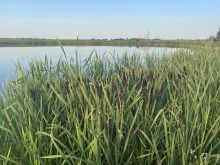Late last month, a horse breeder from Belgium was making plans to travel halfway around the world in a bid to find an animal that many would argue does not exist.
Andre Leemans, who lives not far from Brussels, was planning to visit Manitoba in early September in his search for an albino mare and stallion. He breeds and trains horses for international equestrian jumping events.
Speaking through an interpreter during a recent telephone interview, Leemans said he owned an albino horse about 20 years ago. He was impressed by its qualities and considered it among the best he ever owned.
Read Also

Europe holds promise for Canadian lentils
Pulse Canada is trying to help boost lentil consumption in Europe, which is already the fourth largest market.
“He loves them and it’s a passion for him,” said the interpreter, speaking on Leemans’ behalf.
The interpreter said they searched the internet and found what were believed to be true cases of albino horses.
Due to the language barrier, it was difficult to decipher whether Leemans would be in Manitoba searching for true albinos, or whether his interest would include horses that come close to being true albinos, but still have slight traces of pigmentation somewhere on their skin and pigmentation in their eyes.
A true albino would be without any pigmentation in both its skin and eyes.
Shelagh Copeland, manager of Manitoba Agriculture’s veterinary field services branch, checked her reference books and found there have been no documented cases of such a horse.
However, equine veterinarian Ross McKague of Brandon said the lack of documented cases does not mean true albino horses never existed. It was only in recent times that technology reached the point where the genes behind that trait could be identified, he added, which would make it easier to determine whether a horse was a true albino.
He questioned why anyone would want to own an albino horse, since the absence of pigmentation would leave the skin and eyes more vulnerable to the sun’s ultraviolet rays, presenting a greater risk of illnesses such as skin and eye cancer.
“In general, it’s a genetic flaw, not an attribute,” McKague said.
An article posted on a western Canadian horse trading website said that what were once called albinos are actually horses now referred to as Cremellos and Perlinos.
Quoting the Cremello and Perlino Education Association, the article said Cremellos have white manes and tails, while Perlinos have golden hued manes, tails and points, and both can have white markings, dappling and shadowing.














